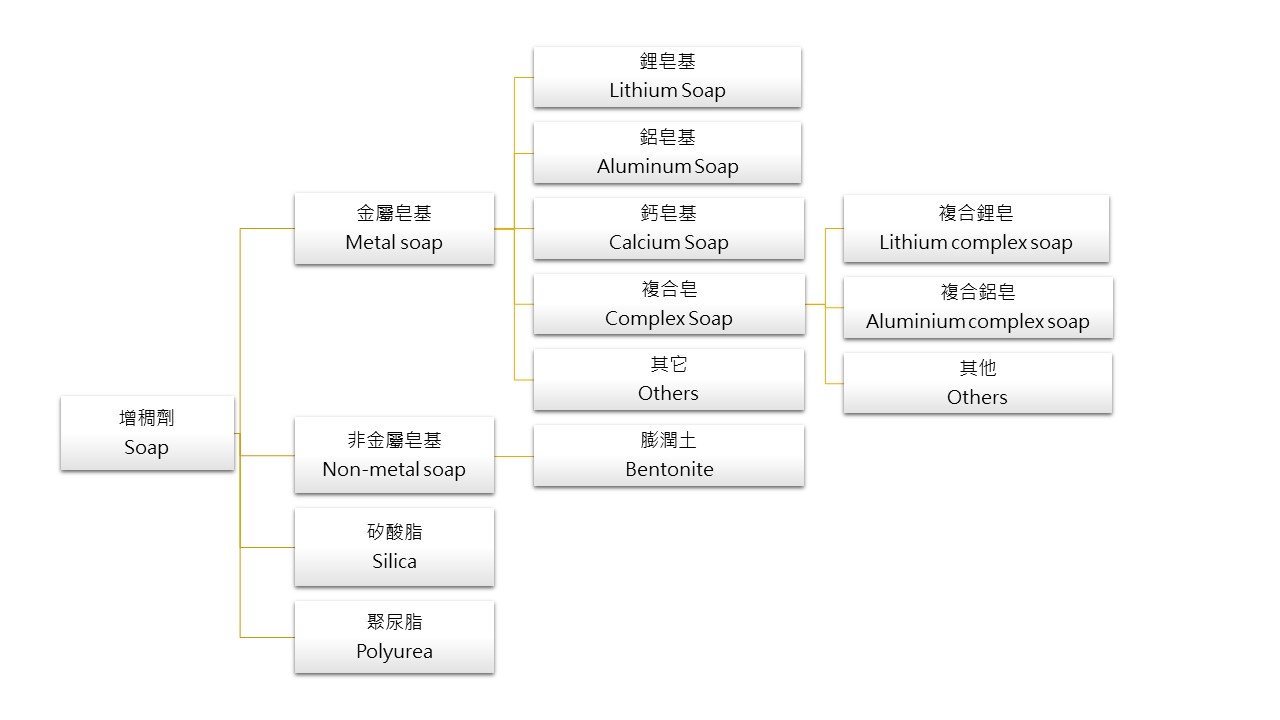-
01. Lubrication and Friction
When two objects contact each other, they will produce a reaction force, which is friction; the friction coefficient (friction force) produced by this relative action can be reduced by lubrication. Lubricant is a kind of lubricating interface. (There are many types of lubrication interface, such as gas, magnetic, liquid, solid.)
The Types of Lubrication
(a) Dry friction, Solid friction
(b) Boundary lubrication, Boundary friction
(c) Fluid lubrication, Fluid friction
※Generally speaking, fluid lubrication is better than boundary lubrication which is better than dry friction.
-
02. Oil and Grease


-
03. Base Oil Types
-
04. The Introduction of Additives
Additives can make lubricants have different functions, such as reducing the pour point, avoiding oxidation of the grease, etc.

-
05. The Introduction of Soap
The soap can thicken liquid oils and turn them into solid grease. Different soaps can give greases different characteristics. Lithium soap-based greases have stable properties, lithium-complex soap-based greases have higher drop points, and complex aluminum soap-based greases can be made for food-grade lubricating oils.

-
06. The Test Specifications of Lubricants
